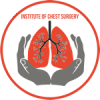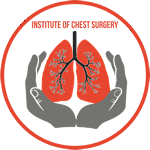Aspergilloma, commonly known as a fungus ball, is a fungal infection that can form in pre-existing lung cavities, usually resulting from conditions such as tuberculosis or sarcoidosis. The presence of a fungal ball in the lungs can lead to a range of respiratory symptoms and complications. One of the pressing questions among patients diagnosed with aspergilloma is, “Is surgery the only option for aspergilloma treatment?” In this blog post, we will explore the various treatment options available for aspergilloma and discuss whether surgery is the sole approach or if there are alternative methods to manage this challenging condition.
Understanding Aspergilloma and its Treatment
Before we delve into the available treatment options, let’s gain an understanding of aspergilloma and the factors that influence the choice of treatment.
1. Aspergilloma Formation
Aspergilloma develops when the fungus Aspergillus colonizes an existing lung cavity, forming a ball-like structure composed of fungal hyphae, fibrin, and cellular debris. These cavities are typically remnants of previous lung infections or conditions, providing a suitable environment for the fungus to thrive.
2. Treatment Goals
The primary goals of aspergilloma treatment are to alleviate symptoms, prevent complications, and improve overall lung function. Effective management aims to reduce the size of the fungus ball, prevent its growth, and address any associated infections.
Is Surgery the Only Option for Aspergilloma Treatment?
Surgery is considered one of the treatment options for aspergilloma, but it is not the only approach available. The choice of treatment depends on several factors, including the size and location of the fungal ball, the overall health of the patient, and the presence of underlying lung conditions.
Let’s explore the different treatment options for aspergilloma:
1. Observation
In certain cases, especially when the aspergilloma is small and asymptomatic, healthcare providers may opt for an observational approach. Regular monitoring through imaging studies, such as chest X-rays or CT scans, can help assess the stability of the aspergilloma and the absence of any concerning changes.
Observation is typically considered for patients who are not suitable candidates for other treatment modalities due to advanced age, significant comorbidities, or poor lung function. It is crucial to closely monitor these patients to detect any changes in the fungal ball’s size or associated symptoms promptly.
2. Antifungal Medications
In some instances, antifungal medications may be prescribed to manage aspergilloma. However, it is essential to note that antifungal drugs alone cannot eliminate the fungal ball entirely. Instead, they are used to prevent the infection from spreading and to reduce inflammation caused by the fungus.
Antifungal medications, such as itraconazole or voriconazole, may be recommended for patients with contraindications to surgery or as an adjunct to surgical treatment. They are also considered for patients with multiple fungus balls or those at higher risk of complications from surgery.
3. Bronchial Artery Embolization (BAE)
Bronchial artery embolization (BAE) is a minimally invasive procedure that involves injecting substances into the blood vessels supplying the aspergilloma. The aim is to reduce blood flow to the fungus ball, leading to its shrinkage over time.
BAE is particularly beneficial for patients who are not surgical candidates or have massive hemoptysis (coughing up blood) associated with the aspergilloma. The procedure can effectively control bleeding and alleviate symptoms without the need for major surgery.
4. Surgical Resection
Surgery remains one of the mainstays of aspergilloma treatment, especially in cases where other options are not feasible or have not produced the desired results. The surgical approach involves removing the fungal ball and any surrounding lung tissue to prevent recurrence.
Video-assisted thoracoscopic surgery (VATS) and thoracotomy are the two main surgical techniques used for aspergilloma resection. VATS is a less invasive option with smaller incisions, shorter hospital stays, and quicker recovery. Thoracotomy, on the other hand, involves a larger incision and may be necessary for complex cases.
The decision to perform surgery depends on factors such as the size and location of the aspergilloma, the presence of complications like persistent bleeding or recurrent infections, and the patient’s overall health status.
5. Combination Therapy
In certain situations, a combination of treatment modalities may be employed to manage aspergilloma more effectively. For instance, patients who undergo surgical resection might receive antifungal medications post-operatively to prevent recurrence. In other cases, BAE may be followed by antifungal therapy to address both the bleeding and the fungal ball.
Conclusion
In conclusion, surgery is one of the available treatment options for aspergilloma, but it is not the only approach. The management of aspergilloma requires a tailored approach based on the individual patient’s condition, medical history, and overall health status. Observation, antifungal medications, bronchial artery embolization, and surgery are all viable options depending on the specific circumstances.
The treatment decision for aspergilloma should be made collaboratively between the patient and a qualified healthcare professional with expertise in managing respiratory conditions. Proper evaluation, close monitoring, and timely interventions are vital to achieving the best possible outcomes for patients with aspergilloma.







